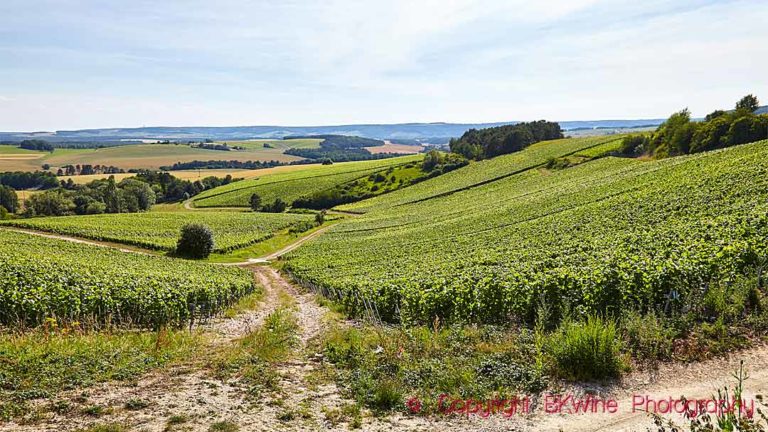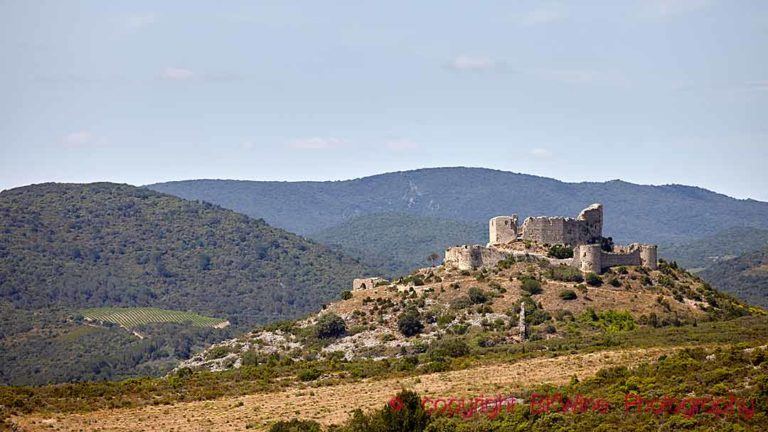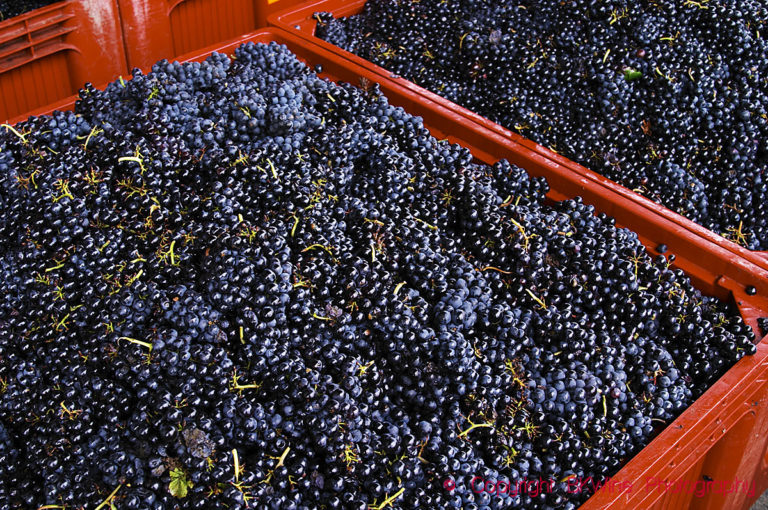Twenty-four producers in Alsace presented their new vintages in Stockholm. BKWine Magazine’s Carl-Erik Kanne reports.
Once a year in Sweden the communication firm Sopexa organizes a tasting of wines from Alsace. This year, it was held at the Opera Terrace where 24 producers were present with their new vintages. There was also a Master Class led by Thierry Frietsch, a well known wine profile and wine educator in Alsace.
Forty guests was greeted by the message that our host had not prepared any presentation… But he had instead selected six older wines from CIVA’s (Alsace´s wine consortium) cellar. Frietsch wanted us to taste the wines blind and then give our opinion about the grape variety, vintage and character. A challenge!
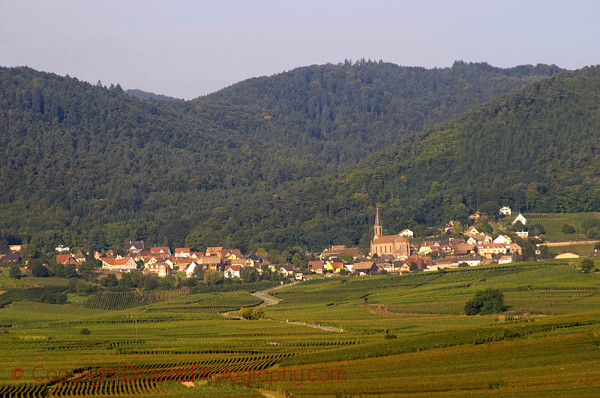
The six wines that we tasted blind
The first wine had a straw-yellow color, aromatic scent with a hint of pine and herbs. The taste was fresh with moderate acidity, good balance with some pleasant bitterness in the aftertaste. The wine turned out to be a Muscat Grand Cru Altenberg de Bergbieten where the soil is clay and limestone.
The vintage was 1994! Very good freshness for a 23-year old Muscat wine.
The following two wines had a color with obvious signs of age. Both were dark yellow with number three slightly darker.
Number two had aromas of red apples, dried fruit and flavors in the same style with balanced acidity. The wine was a Riesling Grand Cru Vorbourg considered typical of the limestone soil of the vineyard there.
Wine number three had a darker color, but greater freshness in the aroma of citrus and yellow apples. Low acidity but yet balanced. The soil in the Brand-area is dominated by granite, which gives character to the wine.The wine was a Brand Riesling Grand Cru 1990
Wine number four poured in our glass was a golden colored drink. Small pieces of cork revealed that the cork was about to give up. That normally means that the wine is probably older than thirty years. None of the wines had been recorked. Complex aromas with hints of roses and forest hit the nose and in the mouth the wine still felt balanced despite that the acidity had almost disappeared. I perceived a slight sweetness from the alcohol. One guess was that the grape variety was pinot gris. It proved to be correct, but still it was not! We had a tokay d’Alsace in the glass, a designation that was banned in 1983, but the wine was from 1971!
The ban of using the name Tokay came after complaints from Hungary who naturally wanted to have exclusive rights to the name. During a transition period it was possible to write tokay pinot gris on the label, but from 2006 only pinot gris.
The end of the Master Class-tasting consisted of two wines made from the same grape, but from two different vintages, 1983 and 1989. Both years were relatively warm. The two wines were in the category “Selection de Grains Noble”, a designation that may be used on grapes attacked by noble rot (Botrytis cinerea). The noble rot makes the grapes shrivel and therefore they get a higher fruit and sugar concentration. The most famous wines where the noble rot is fundamental are the world famous Sauternes.
Wine number five was golden yellow and the number six amber, both had pronounced, complex aromas of ripeness.
The taste was in both cases concentrated and the mature notes had almost completely taken over the original fruit aromas. It was therefore difficult to conclude that it was gewurztraminer we had in the two glasses. Fantastic fine wines to combine, for example, with foie gras. Wine number six is just fine on its own in small sips.
An interesting and unusual prelude to an afternoon in Alsace!
Detailed info about the wines:
| Name | Vintage | Grand Cru | Alcohol | Acidity g/l | Residual sugar g/l |
| Muscat D’Alsace | 1994 | Altenberg de Bergbieten | 12,7% | 3,7 | 7,4 |
| Riesling | 1994 | Vorbourg | 12,5 | 8 | 5,1 |
| Riesling | 1990 | Brand | 13,1 | 1,9 | 4,7 |
| Tokay d’Alsace | 1971 | – | – | – | 3 |
| Gewürztraminer | 1983 | – | 13,6 | 2,8 | 50,3 |
| Gewürztraminer | 1989 | (Pfirzigberg) | 12,8 | 3,8 | 110 |
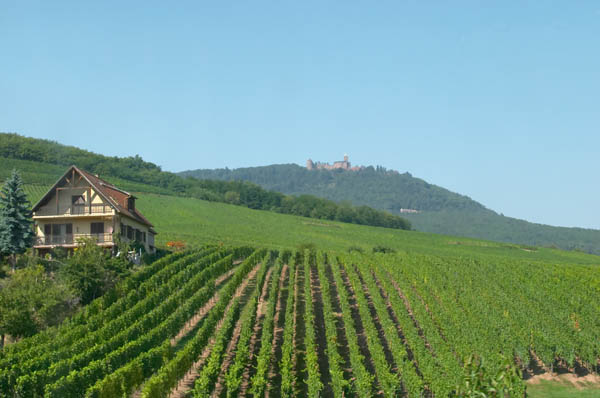
The Wine Fair and meeting the producers
After many impressions from the Master Class it was time for the fair’s wines and a few hours of tasting.
Trends and tendencies during the fair in 2016.
– The number of exhibitors was the same, but some were new, others were not participating.
– More producers had Swedish representation and more wines were available in the Swedish monopoly, Systembolaget.
– Consistently high quality of the wines
– Sweetness in the wines seemed not to be as pronounced as it did in 2016, even though there were many wines from 2015, which was a warm year.
– Continued wide range of producers where most of them offered wines made from all common grape varieties of Alsace.
– Most of them had a crémant, different quality levels of standard wines, and at least one prestige wine and many had one or more grand cru wines.
– Quite a few wines made from pinot noir, usually in a light quite simple style to be drunk young.
The products from the established quality producers, such as M Deiss, Hugel, and others, showed the usual high standard. Personally, I thought that this year’s producer surprise was Jean Biecher that consistently had very high-quality wines to offer. The producer has a typical Alsatian profile; family company with a long and successful history in spite of all the historical difficulties with borders for example. Today it is one of the major producers in the region and the head quarter is in Saint Hippolyte since 1776.
Inspired by tasting pinot gris during the master class, I began to search for more good pinot gris in the style I like best. Pinot gris with good balance between acidity and sweetness, and as low residual sugar as possible. My favorite from 2016, Michel Fonné Tradition, was the starting point.
To my delight, I noted that the number of wines in my favorite category had increased significantly since 2016 and I can recommend the following for you that have a similar taste:
| Pinot gris producer | Vintage | Grand Cru | Price
euro |
Residual sugar g/l | Tasting notes |
| Michel Fonné | 2015 | Tradition | 14 | 7 | Good balance, tasty |
| 2013 | Marckrain | 23 | – | A delight | |
| Bott Frères | 2014 | Gloeckelberg | 3,5 | Good balance, tasty | |
| Marcel Deiss | 2012 | 24 | Balanced, well done | ||
| Wolfberger | 2014 | La Louve | 2 | Blanaced, high acidity | |
| Paul Blanck | 2015 | Fruit driven, low sweetness | |||
| Bernhard & Reibel | 2005 | Vendanges tardives | 34 | Elegant | |
| Fernand Engel | 2014 | Réserve-Bio | 14 | 14,4 | Well balanced |
| Jean Biecher | 2015 | Organic | 10 | Well made | |
| Charles Wantz | 2007 | Vendange tardive | Well balanced dessert wine | ||
| Charles Frey | 2013 | Quintessence | 15 | 25,7 | Aged in oak 12 months, citrus good acidity |
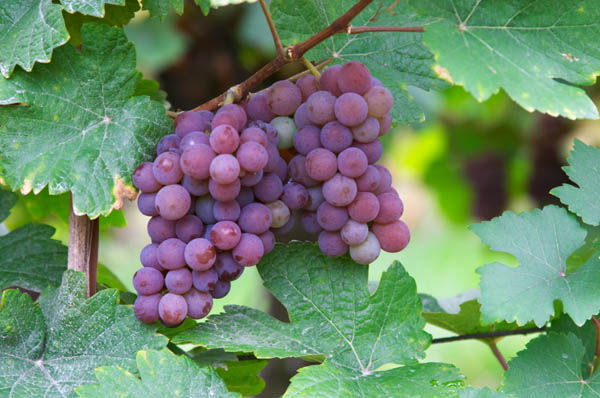
After this deep dive into the pinot gris offer it was time to try riesling which the majority of exhibitors had available. I would love to enrich my wine cellar with the following wines:
| Riesling producer | Vintage | Grand Cru / other names | Tasting notes |
| Marcel Deiss | 2013 | Langenberg | Pebbly and clay soil. Mostly riesling, tasty, minerality |
| Wolfberger | 2014 | Steingrubler | Fresh, minerality |
| 2012 | Rangen | Volcanic soil, nice acidity, well balanced, tasty | |
| Michel Fonné | 2012 | Mambourg | Tasty, well balanced, long finish |
| Fam. Hugel | 2011 | Grossi Laüe | Lot of everything. Fantastic riesling! |
| Fernand Engel | 2013 | Réserve Bio | Nice minerality, fresh grapefruit bitterness in the finish |
| Jean Biecher | 2015 | Rosacker | Spicy, fruity, minerality |
| 2015 | Kastelberg | Slate soil. Lovely fruit, well balanced | |
| 2013 | Schoenenbourg | Very dry, fruity, minerality, well balanced. | |
| Charles Frey | 2014 | Frankstein | Minerality, well balanced, very good riesling |
Of the other wines I tasted there were some good crémant d’alsace of which I have chosen to include one made from riesling and one made with pinot blanc. Of the other grapes, I have picked out a few that I would recommend.
| Producer
Other wines |
Vintage | Grand Cru or other denomination | Grape | Tasting notes |
| Marcel Deiss | 2011 | Burg | blend | Good balance. Minerality. Nice for Asian food. |
| Wolfberger | 2015 | Pinot noir organic | pinot noir | Eight months in oak. Special character, spicy. |
| Fam Hügel | 2013 | Classic | gew.traminer | Elegant, low residual sugar |
| Charles Wantz | 2013 | ”o” | gew.traminer | Fresh gewurztraminer pretty low residual sugar (15 g/l) |
| NV | Crémant d’Alsace Carte Noire | pinot blanc | A wine that is suitable to a lot, a favorite | |
| Dom Dussourt | 2015 | Réserve particulière | muscat | Fine balance. Good with asparagus. |
| NV | Crémant d’Alsace Brut | riesling | Nice freshness, tasty |
I can also mention that the desire to experiment never seems to end. Fernand Engel presented a couple of wines made from pinot noir where he had tried to increase the intensity of taste by various methods similar to those used in the region of Veneto. The wines were easy to drink but not quite my style.
We will see if the style is spreading!
Carl-Erik Kanne is a long time wine enthusiast and fervent wine taster. He reports from wine tastings and wine events in Stockholm for BKWine Magazine.


